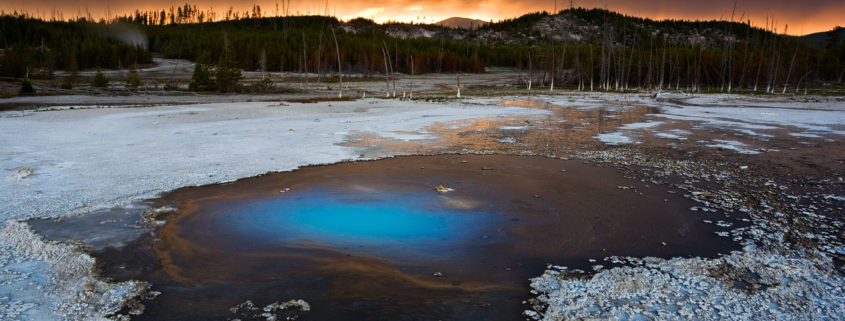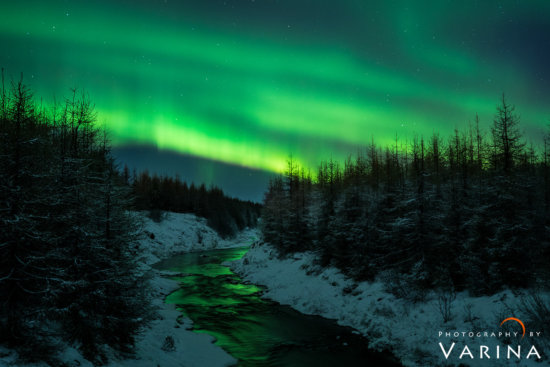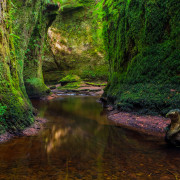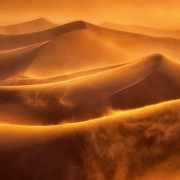Camera Lens Choices Every Nature Photographer Needs To Know
Nature photography is a fascinating genre that offers endless opportunities for creativity and exploration. Whether you’re capturing the grandeur of a landscape, the intricate details of a flower, or the grace of a wild animal, having the right camera lens is essential to achieving stunning results. The type of lenses you will need for nature photography will depend on the specific subject and style of photography you are interested in.
Popular Camera Lenses for Nature Photography
There is no single “must-have” focal length for nature photography, as the type of lens required depends on the specific subjects and situations being photographed. However, there are a few common focal lengths that are often used by nature photographers.
Wide-Angle Lenses
Wide-angle lenses are ideal for capturing expansive landscapes or large groups of animals in their natural habitat. These lenses typically have a focal length of 10-24mm (on crop sensor cameras) or 16-35mm (on full-frame cameras). This makes them perfect for capturing a sense of place and showcasing the environment in which your subject lives.
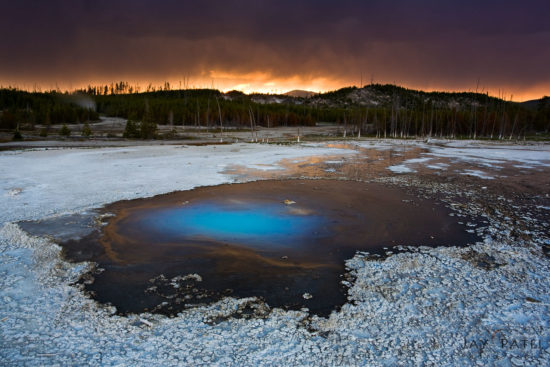
Wide angle lens landscape photography from Pearl Spring, Yellowstone National Park, Wyoming by Jay Patel
When selecting a wide-angle lens, consider the aperture. A wide aperture will allow you to capture images in low light and create a shallow depth of field. This can be useful when you want to isolate a specific area of the scene, such as a flower or animal, while blurring the background.
Standard Lenses
Standard lenses are versatile and can be used for a variety of nature photography subjects, including wildlife, landscapes, and close-ups. These lenses typically have a focal length of around 35-85mm (on full-frame cameras) or 24-70mm (on crop sensor cameras). A standard lens can also be used for capturing panoramic images, where you stitch together multiple photos to create a larger image. This technique is particularly useful when capturing large landscapes or environments with a lot of detail.
When selecting a standard lens, consider the aperture. A wide aperture can allow you to capture images in low light and create a shallow depth of field. This can be useful when you want to isolate your subject from the background and create a bokeh effect.
Telephoto Lenses
Telephoto lenses are useful for capturing wildlife and other subjects from a distance. They allow the photographer to get close-up shots of animals without disturbing them, and they can also be used to compress perspective and isolate the subject from the background. Telephoto lenses typically have a focal length of 70-200mm or longer, depending on the specific needs of the photographer. Telephoto lenses with focal lenght of 300mm or longer is especially useful when shooting wildlife, as it allows you to capture the details of your subject without getting too close and potentially disturbing it.
Image stabilization is also important when shooting with a telephoto lens, as the longer focal length can magnify any camera shake or movement. Look for a lens with built-in stabilization or consider using a tripod to stabilize your camera.
Macro Lenses
Macro lenses are perfect for capturing close-up shots of plants, flowers, and insects. These lenses have a short minimum focusing distance and can magnify your subject to create stunning, detailed images. This is especially useful when capturing the intricate details of a flower or the texture of an insect’s wings.
When selecting a macro lens, consider the focal length. A longer focal length can provide a greater working distance, which can be useful when photographing skittish insects or small animals. However, a shorter focal length can allow you to capture wider shots of your subject and the environment in which it lives.
Speciality Camera Lenses
A tilt-shift lens a specialized lens that allows for the control of the plane of focus and the perspective of the image. This type of lens can be particularly useful for nature photographers in a number of ways. Nature photographers can use a tilt-shift lens for correcting perspective distortion, controlling depth of field, and creating unique perspectives. However, it is important to note that tilt-shift lenses can be expensive and require practice to master.
Lensbaby is a brand of camera lenses that are known for their unique and creative effects. These lenses are designed to provide a distinctive look and feel to photographs, with a focus on selective focus and creative blur. Lensbaby lenses are ideal for photographers who want to experiment with creative techniques and produce images that stand out from the crowd.
How to Select a Camera Lens for Nature Photography
When choosing a camera lens for nature photography, there are several key specs to consider:
- Focal Length: As mentioned in the previous answer, focal length is an important consideration when choosing a lens for nature photography. The choice of focal length depends on the type of subjects being photographed, with wide-angle lenses being ideal for landscapes and telephoto lenses being useful for capturing wildlife. I always to carry camera lenses that would cover all focal lenght between 16mm to 200mm in my camera bag.
- Aperture: The aperture of a lens refers to the size of the opening that lets light into the camera. A wider aperture (lower f-number) allows more light into the camera and creates a shallower depth of field, which can be useful for isolating the subject from the background. A narrower aperture (higher f-number) lets in less light but increases the depth of field, which can be useful for landscapes where everything needs to be in focus. A lens with a wide aperture is generally preferred for nature photography, as it allows for greater control over depth of field and enables faster shutter speeds in low light situations.
- Autofocus Speed: Autofocus speed can be important when photographing wildlife or other fast-moving subjects. A lens with fast autofocus can help ensure that the subject is in focus and sharp.
- Weather Sealing: Weather sealing is a feature that helps to protect the lens from moisture and dust. This can be particularly
- important for nature photographers, who often work in challenging environments. A weather-sealed lens can help to protect the lens and camera from damage.
- Lens Coating: Lens coating refers to the special coatings that are applied to the lens elements to help reduce lens flare, ghosting, and other optical distortions. These coatings can be particularly important when shooting in bright sunlight or other challenging lighting conditions.
- Image Stabilization: Image stabilization is a feature that helps to reduce camera shake and blur, resulting in sharper images. This can be particularly useful when using telephoto lenses, as they can be more prone to camera shake. Some lenses have built-in image stabilization, while others rely on the camera body for stabilization. This is a nice to have feature, and is most useful at longer focal lenght. We often use image stablization for wildlife photography.
- Weight and Size: The weight and size of a lens can also be important considerations for nature photographers, who often need to carry their gear over long distances. A lightweight and compact lens can be easier to carry and maneuver in the field. Camera lenses with a wider maximum aperture (low F-number) will weight more than their counter part with narrower maximum aperture (high F-number).
Zoom vs Prime Camera Lenses
Zoom lenses and prime lenses are two types of camera lenses that each have their own unique advantages. Here are some things to keep mind evaluate the trade off between them:
Advantages of Zoom Lenses
- Versatility
Zoom lenses can cover a wide range of focal lengths, which makes them ideal for a variety of photography styles. They can be used for everything from landscapes to portraits, without the need to change lenses. - Convenience
Zoom lenses are easy to use and require fewer lens changes, which can be convenient when shooting in fast-paced or unpredictable situations. - Image Stabilization
Many modern zoom lenses come with built-in image stabilization, which helps to reduce camera shake and produce sharper images.
Advantages of Prime Lenses
- Image Quality
Prime lenses are known for their high-quality optics and sharpness, especially in the center of the frame. - Wide Aperture
Prime lenses often have a wider maximum aperture than zoom lenses, which makes them ideal for low-light situations and creating a shallow depth of field. We often use prime lenses to photograph night sky. - Compact Size
Prime lenses are generally smaller and lighter than zoom lenses, which makes them easier to carry around.
The choice between a zoom lens and a prime lens ultimately comes down to personal preference and the specific needs of the photographer. Zoom lenses are versatile and convenient, while prime lenses offer superior image quality and wide apertures. Both types of lenses have their pros and cons, so it’s important to consider your shooting style, budget, and specific photography needs when choosing a camera lens.
Choice between Rent or Owning Camera Lenses
Whether a nature photographer should own or rent camera lenses depends on their individual needs and budget.
- Owning a Camera Lens
Owning lenses can be advantageous if you plan on using them frequently and if you have the budget to invest in high-quality equipment. It also allows you to become familiar with their specific characteristics and capabilities, which can be valuable when working on a particular project or shooting in a specific environment. Additionally, owning lenses means you can use them at your own convenience and on your own schedule without having to worry about rental fees or availability.
- Renting a Camera Lens
However, if you’re a nature photographer who only needs a specific lens for a particular project or if you’re on a budget, renting lenses can be a good option. Renting lenses allows you to access a wider range of equipment than you might be able to afford to purchase outright, and it can also allow you to test different lenses before deciding which ones to invest in.
In general, owning lenses is a better option for nature photographers who plan on using them frequently or for long-term projects, while renting lenses is more suitable for nature photographers who only need a specific lens for a short period of time or who want to try out different lenses before making a purchase.
In conclusion, when choosing a lens for nature photography, it’s important to consider the specific needs of your photography, as well as your personal preferences and budget. A lens that works well for one nature photographer may not be the best choice for another, so it’s important to do your research and test out different lenses to find the one that works best for you.

